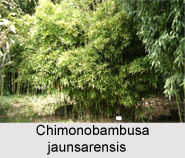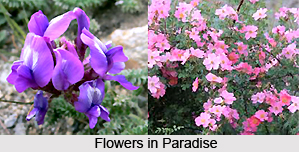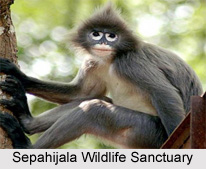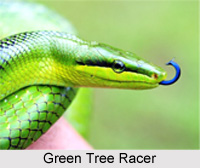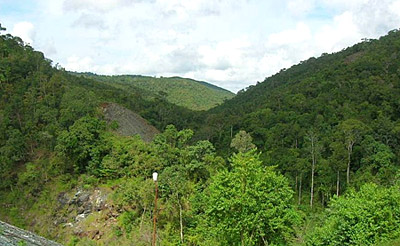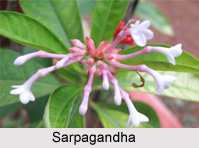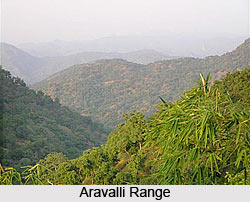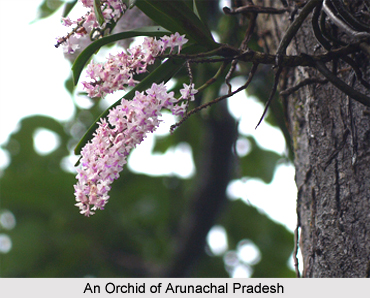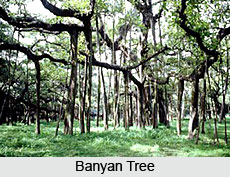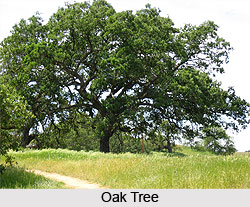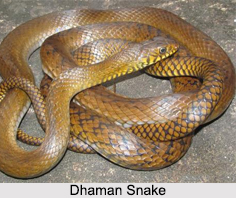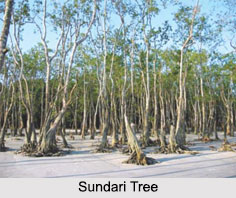Introduction
Karnataka, located in southern India, is celebrated for its remarkable biodiversity and breathtaking natural beauty. The state’s diverse ecosystems, spanning from dense forests to dry grasslands, support a rich variety of wildlife. With 30 wildlife sanctuaries and 5 national parks, Karnataka stands as a true paradise for nature lovers and wildlife enthusiasts alike. Wildlife in Karnataka is preserved in these protected areas of national parks, wildlife sanctuaries and bird sanctuaries.
Areas Protecting Flora and Fauna of Karnataka
The important national parks protecting the flora and fauna of Karnataka are Anshi National Park, Bandipur National Park, Bannerghatta National Park, Kudremukh National Park and Nagarhole National Park. Some of the wildlife sanctuaries of Karnataka are Biligiri Rangaswamy Temple Wildlife Sanctuary, Adichunchanagiri Peacock Sanctuary, Brahmagiri Wildlife Sanctuary and Cauvery Wildlife Sanctuary. Some of the bird sanctuaries of Karnataka are Attiveri Bird Sanctuary, Bonal Bird Sanctuary, Magadi Bird Sanctuary and Gudavi Bird Sanctuary.
Flora of Karnataka
The recorded forest of Karnataka encloses an area of about 43,356.47 square kilometers. It covers about 22.61 percent of the total geographical area of the state. Evergreen and semi-evergreen forest, moist deciduous forest, dry deciduous forest, scrub and thorny forest and un-wooded forest like grassland are found in Karnataka. Sandalwood is considered as the state tree and lotus is considered as the state flower.
Eucalyptus trees are found in abundance in the Western Ghats. Teak, rosewood and casuarina beautify Karnataka. Other tree species found here are Iphigenia Mysorensis, Derris Indica, Barringtonia Racemosa, Cassia Fistula, Prosopsis Julifora, Dipterocarpus Indicus, Caryota Urens, Dillenia Pentagyna and Zizyhus Mauritania. The common species of flora include Lagerstromia Lanceolata, Adina Cordifolia, Careya Arborea, Dalbergia Latifolia, Terminalia Paniculata, T. Tomentosa and Vitex Altissima.
Some species of trees found in Karnataka are Callophyllum
tomentosa, Callophyllum wightianum, Garcina cambogia, Garcina
morealla, Alstonia scholaris, Flacourtia montana, Artocarpus
hirsutus, Artocarpus lacoocha, Cinnamomum zeylanicum, Grewia tilaefolia,
Santalum album, Shorea talura, Emblica officinalis, Vitex altissima and
Wrightia tinctoria.
Endangered Species of Flora in Karnataka
Karnataka is home to several critically endangered plant species, including evergreen trees such as Dipterocarpus bourdilloni, Hopea erosa, and Hopea jacobi, along with Croton lawianus (a small tree) and Pinnatella limbata (a species of moss). The state also harbors a range of endangered flora, featuring evergreen trees like Cynometra bourdillonii, Cynometra travancorica, Hopea glabra, Hopea parviflora, Hopea ponga, Hopea racophloea, Hopea wightiana, Shorea roxburghii, and Tarenna agumbensis.
Among its flowering plants, notable endangered species
include Glochidion pauciflorum, Glochidion tomentosum, Ixora
lawsoni, and Syzygium stocksii. Other threatened trees found in
Karnataka include Isonandra stocksii, Kingiodendron pinnatum, Maesa
velutina, Myristica magnifica, Rapanea striata, and Xylosma
latifolium.
Fauna of Karnataka
Karnataka hosts a remarkable diversity of habitats that support numerous species of mammals, reptiles, amphibians, birds, fish, and insects. It ranks among the richest states in India in terms of wildlife. The state’s exotic fauna ranges from the majestic elephants to the magnificent tiger, reflecting its extraordinary ecological wealth. The forests of Karnataka comprises of about 25 percent of elephants and about 20 percent of tigers.
Mammals: Karnataka is home to an impressive range of striking mammals, including sloth bears, Asiatic elephants, Bengal tigers, wild boars, black panthers, Asiatic wild dogs, Indian leopard, small Indian civets, and Indian flying foxes, among others. Mammals such as slender loris, gaur, wild pig, pangolin, Malabar giant squirrel, mouse deer, bonnet macaque, common langur and barking deer are most common in dense forests of Karnataka.
Amphibians: Karnataka boasts a rich diversity of amphibians, with the Western Ghats serving as a vital habitat for many of them. The region’s forests are home to rare and endangered species such as the purple frog and the Malabar flying frog. Other notable amphibians found in the state include the Malabar gliding frog, the golden frog, and the Indian bullfrog, reflecting Karnataka’s ecological richness and variety.
Birds: Karnataka is home to a vibrant array of bird species, including the Malabar parakeet, grey francolin, little grebe, cattle egret, storm petrel, and many other exotic varieties. The bird species most commonly found in the state are ruby throated bulbul, Indian shama, Malabar whistling thrush, orange headed trush, paradise flycatcher, great Indian hornbill, cormorant, darter, white ibis, great stone plover, cliff swallow, spoonbill, lesser whistling teal, open billed stork, painted stork, stony plover, pied kingfisher, common kingfisher, racket-tailed drongo and blue throated barbet.
Reptiles: Karnataka is a home to an impressive diversity of reptiles. Its dense forests are known for preserving several notable snake species, including the Indian python, king cobra, trinket snake, Indian cobra, common krait, large-eyed bronzeback, and common rat snake. Reptiles like different species of crocodile, tortoise, lizard, chameleon, and gecko are also found in Karnataka. The marsh crocodile and other crocodile species inhabit the wetlands of Karnataka. The beaches of coastal Karnataka serve as the nesting grounds for the rare leatherback turtle and the olive ridley turtle.
Fishes: Karnataka’s many rivers and streams teem with a remarkable diversity of fish species. The water bodies of the Western Ghats, in particular, are home to numerous exotic varieties of freshwater fish. Common species found in these waters include eels, carps, barbs, minnows, danios, mahseers, barils, osteobramas, chelas, garras, and catfish. Along its extensive coastline, Karnataka also supports a thriving marine ecosystem, hosting species such as sardines, rays, soles, mackerels, tuna, herrings, sharks, cods, ponyfish, and many others.
Insects: Karnataka is a thriving hotspot for insect
diversity, home to a stunning array of butterflies and numerous unique insect
species. The forests and Western Ghats of the state provide ideal habitats for
a wide range of insects, including aquatic varieties as well as both day-flying
and nocturnal species.
Endangered Species of Fauna in Karnataka
The Forest Department of Karnataka has identified 40 animal
species as endangered within the state. Among these are some of India’s most
iconic and vulnerable creatures, including the lion-tailed macaque, tiger,
elephant, sloth bear, blackbuck, Indian brown mongoose, wild dog, Kolar
leaf-nosed bat,
Travancore flying squirrel, spotted eagle, olive ridley turtle,
and leatherback turtle.
These species represent the rich yet fragile biodiversity that Karnataka
strives to protect through its ongoing conservation efforts.
Flora and Fauna in National Parks of Karnataka
Flora and Fauna of Karnataka differ across its five national
parks, each boasting of its unique biodiversity due to their location and
natural resources.
Bannerghatta National Park: Bannerghatta National Park features dry deciduous forests and thorny shrubs, with moist forest patches along streams. The park is rich in tree species such as teak, sandalwood, and Indian gooseberry, with bamboo, particularly the Dendrocalamus strictus variety, being widespread. Small plantations of eucalyptus and rain trees also exist. The park’s fauna includes leopards, gaurs, elephants, golden jackals, foxes, wild boars, sloth bears, sambars, spotted and barking deer, langurs, bonnet macaques, porcupines, and hares. Notably, a Bengal tiger has also been sighted within its boundaries, adding to the park’s diverse and vibrant wildlife population.
Kudremukh
National Park: Kudremukh National Park is covered mainly by evergreen
and semi-evergreen forests, with shola grasslands flourishing above 1,400
meters. Its vegetation includes species like teak, jackfruit, Indian beech, and
various figs, along with small plantations of eucalyptus, casuarina, and
acacia. The park’s rich wildlife features tigers, leopards, wild dogs, jackals,
lion-tailed macaques, langurs, sloth bears, gaurs, sambars, spotted and barking
deer, giant squirrels, porcupines, and mongooses. Reptiles such as snakes and
tortoises also inhabit the region, while birdlife includes the Malabar trogon,
great hornbill, Malabar whistling thrush, and imperial pigeon, highlighting the
park’s remarkable biodiversity.
Nagarahole National Park: Nagarahole National Park features forests dominated by teak and rosewood, with dry deciduous forests in the east and moist, semi-evergreen forests in the west. Swampy grasslands known as hadlus are scattered throughout, providing ideal grazing areas for herbivores. The park is home to elephants, gaurs, deer species, antelopes, tigers, leopards, civets, sloth bears, wild dogs, and flying foxes. Over 300 bird species, including herons, eagles, peafowl, kingfishers, and woodpeckers, thrive here. Reptiles such as crocodiles, tortoises, monitors, cobras, vipers, pythons, and flying snakes further enrich the biodiversity of this vibrant and ecologically significant sanctuary.
Anshi National Park: Anshi National Park is
characterized by lush semi-evergreen and evergreen forests, hosting a rich
variety of tree species such as teak, cinnamon, and jackfruit. This vibrant
ecosystem supports diverse wildlife, including elephants, gaurs, wild boars,
sambars, chevrotains, deer, langurs, macaques, lorises, tigers, leopards,
civets, jackals, wild dogs, sloth bears, and several species of squirrels and
porcupines. The park is also home to reptiles like king cobras, pythons,
vipers, kraits, and rat snakes. Among its remarkable birdlife are the great
hornbill, Malabar pied hornbill, and Ceylon frogmouth, reflecting the park’s
exceptional ecological richness.
Flora and Fauna in Wildlife Sanctuaries of Karnataka
Karnataka is home to 19 wildlife sanctuaries and 11 bird sanctuaries, making a total of 30 protected areas dedicated to conserving the state’s rich and diverse flora and fauna.
Arabithittu Wildlife Sanctuary: Located in Mysore district, Arabithittu Wildlife Sanctuary features eucalyptus and sandalwood plantations and is home to leopards, foxes, spotted deer, and about 230 species of birds.
Kaveri Wildlife Sanctuary: Spread across Chamarajanagar, Mandya, and Ramanagara districts, Kaveri Wildlife Sanctuary features diverse forests from dry deciduous to evergreen and shelters tigers, elephants, leopards, deer, bears, primates, reptiles, and numerous bird species.
Adichunchanagiri Wildlife Sanctuary: Located in Mandya district, Adichunchanagiri Wildlife Sanctuary spans 0.88 square kilometres and was established to conserve peacocks. It also supports around 250 additional species of birds.
Biligiriranga Swamy Temple Wildlife Sanctuary: Located in Chamarajanagar district, Biligiriranga Swamy Temple Wildlife Sanctuary hosts rich flora, including elephants, tigers, leopards, and more than 200 species of birds like the Nilgiri wood pigeon, and the endangered amphibian Ichthyophis ghytinosus.
Bhadra Wildlife Sanctuary: Covering 492.46 square kilometres, Bhadra Wildlife Sanctuary features diverse flora and fauna, including tigers, leopards, elephants, gaurs, lorises, pangolins, and birds like the ruby-throated bulbul and paradise flycatcher.
Daroji Sloth Bear Sanctuary: Located in Bellary district and spanning 82.72 square kilometres, Daroji Sloth Bear Sanctuary was established primarily to protect and conserve the sloth bear population in the region.
Brahmagiri Wildlife Sanctuary: Located in Kodagu district, Brahmagiri Wildlife Sanctuary features lush evergreen forests dominated by bamboo and trees like cinnamon and Alstonia. It shelters elephants, gaurs, tigers, macaques, Nilgiri martens, and around 300 bird species.
Dandeli Wildlife Sanctuary: Situated in Uttara Kannada district, Dandeli Wildlife Sanctuary is rich in tree species such as rosewood, terminalia, and vitex. It is home to elephants, gaurs, wild boars, lorises, giant squirrels, and barking deer.
Malai Mahadeshwara Wildlife Sanctuary: Established on 7 May 2013, this sanctuary in Kollegala taluk, Chamarajanagar district, adjoins BRT Tiger Reserve and Cauvery Wildlife Sanctuary. It is home to tigers, elephants, leopards, dholes, sambars, and barking deer.
Melkote Temple Wildlife Sanctuary: Located in Mandya district, Melkote Temple Wildlife Sanctuary is home to the endangered plant Cycas circinalis. Its wildlife includes wolves, leopards, blackbucks, pangolins, and around 230 bird species.
Pushpagiri Wildlife Sanctuary: Located in Kodagu district, Pushpagiri Wildlife Sanctuary features rich vegetation, including Hopea parviflora and Ochlandra rheedii. It is home to elephants, tigers, lorises, Nilgiri martens, macaques, and around 230 bird species such as the great pied hornbill, Malabar trogon, and Nilgiri blackbird.
Mookambika Wildlife Sanctuary: Located in Udupi district, Mookambika Wildlife Sanctuary features rich flora, including Dipterocarpus indicus, Calophyllum tomentosum, and the endangered climber Coscinium fenestratum. Its fauna includes slender lorises, lion-tailed macaques, sambars, chitals, and the rare cane turtle.
Nugu Wildlife Sanctuary: Situated in Mysore district, Nugu Wildlife Sanctuary hosts diverse flora such as Indian gooseberry, sandalwood, and bamboo. Its wildlife includes elephants, gaurs, leopards, spotted deer, and common palm civets.
Ranibennur Blackbuck Sanctuary: Situated in Haveri district, Ranibennur Blackbuck Sanctuary is dominated by eucalyptus, along with cassia, prosopis, and ziziphus species. Established primarily to protect blackbucks, it also shelters the endangered great Indian bustard.
Someshwara Wildlife Sanctuary: Situated in Udupi district, Someshwara Wildlife Sanctuary features plant species such as Machilus macrantha, Lophopetalum wightanium, and Artocarpus hirsuta. Its diverse wildlife includes tigers, leopards, lion-tailed macaques, and spotted deer.
Sharavathi LTM Wildlife Sanctuary: Located in Shimoga district, this sanctuary features plant species such as Dipterocarpus indicus, Caryota urens, and Dillenia pentagyna. Its wildlife includes tigers, leopards, mouse deer, macaques, langurs, and various snakes, while birds like the paradise flycatcher, racket-tailed drongo, and blue-throated barbet add to its avian diversity.
Talakaveri Wildlife Sanctuary: Located in Kodagu district, Talakaveri Wildlife Sanctuary hosts plant species such as Albizzia lebbek, Artocarpus lakoocha, Dysoxylum malabaricum, and Mesua ferrea. Its fauna includes clawless otters, elephants, tigers, striped-necked mongooses, and mouse deer, along with about 300 recorded bird species.
Shettihalli Wildlife Sanctuary: Located in Shimoga district, Shettihalli Wildlife Sanctuary is home to plant species such as Cassia fistula, Kydia calycina, and Wrightia tinctoria. Its wildlife includes tigers, leopards, bonnet macaques, and Malabar giant squirrels.
Tungabhadra Otter Conservation Reserve: The
Tungabhadra Otter Conservation Reserve, located near Hampi, is India’s first
dedicated sanctuary established for the protection and conservation of otters.
Flora and Fauna in Bird Sanctuaries of Karnataka
Karnataka’s 11 bird sanctuaries are home to a stunning
variety of exotic and endangered bird species, making the state a vital haven
for avian conservation.
Ranganathittu Bird Sanctuary: Located in Mandya district, Ranganathittu Bird Sanctuary features unique flora such as Iphigenia mysorensis, along with Derris indica and Barringtonia racemosa. It is home to nearly 170 species of birds
Attiveri Bird Sanctuary: Located in Uttara Kannada district, Attiveri Bird Sanctuary is home to diverse bird species, including the white ibis, little cormorant, pied kingfisher, and common grey hornbill.
Mandagadde Bird Sanctuary: Mandagadde Bird Sanctuary, situated on a small island in the Tunga River, is a popular nesting site for migratory birds such as the median egret, little cormorant, and darter (snake bird).
Gudavi Bird Sanctuary: Situated in Shimoga district, Gudavi Bird Sanctuary is dominated by Vitex leucoxylon and Phyllanthus polyphyllus trees. It is home to 191 recorded bird species, including the white ibis, pheasant-tailed jacana, purple moorhen, and little grebe.
Kaggaladu Heronry Stork Sanctuary: Located in Tumkur district, Kaggaladu Heronry is among South India’s largest painted stork sanctuaries. Birds commonly nesting here include painted storks, grey herons, pelicans, black stilts, and various duck species.
Kokrebellur Pelicanry: Located in Kokkare Bellur town
of Mandya district, Kokrebellur Pelicanry serves as a sanctuary for birds like
the grey or spot-billed pelican and painted stork. In total, around 250 bird
species have been recorded here.
Magadi Bird Sanctuary: Located in Magadi village of Shirahatti Taluk, Gadag district, Magadi Bird Sanctuary is a biodiversity hotspot in North Karnataka. The bar-headed goose is a notable migratory visitor to the Magadi wetlands. While most birds feed on fish, amphibians, mollusks, and reptiles, these migratory geese feed on agricultural crops, occasionally causing crop damage during their winter stay.
Bankapura Peacock Sanctuary: Bankapura Peacock Sanctuary, located in Haveri district, was established primarily for peacock conservation. Known as Navilu Pakshidhama, it is India’s second sanctuary dedicated exclusively to peacock conservation and breeding, housing over 1,000 peacocks and peahens.
Bonal Bird Sanctuary: Bonal Bird Sanctuary, also known as Bohnal Bird Sanctuary, is a prominent wetland located in Yadgir district. It hosts around 21 bird species, including the purple heron, white-necked stork, white and black ibis, brahminy duck, and bar-headed goose.
Ramadevarabetta Vulture Sanctuary: Ramadevarabetta Vulture Sanctuary, located in Ramanagara, serves as a vital habitat for the critically endangered long-billed vulture. Another two species- Egyptian and white-backed vultures are also found here.
Ghataprabha Bird Sanctuary: Ghataprabha Bird Sanctuary, located in Belgaum district, is renowned for attracting migratory birds such as the demoiselle crane and the European white stork.
Conservation of Flora and Fauna in Karnataka
Karnataka’s diverse flora and fauna face growing threats from poaching, habitat loss, pollution, human–wildlife conflict, and invasive species. Poaching has severely impacted the breeding of olive ridley turtles and otters along riverbanks, while tigers continue to face danger from illegal hunting. Valuable trees like sandalwood, known for its fragrance, and teakwood, prized for furniture, are also targets of forest poaching. Additionally, dam construction and deforestation have disrupted aquatic ecosystems and displaced forest-dependent species, while industrial and human waste have polluted rivers, harming aquatic life.
To counter these challenges, several conservation
initiatives are underway, primarily led by the Karnataka Forest
Department and various voluntary organizations. Efforts include
relocating human settlements outside protected areas to reduce conflicts, using
satellite technology to detect and control forest fires, and employing radio
tracking and remote camera sampling to monitor wildlife populations. Wireless
networks have been set up to aid field communication and anti-poaching
operations. Moreover, conservation awards have been introduced to recognize and
motivate dedicated forest and wildlife staff across the state.
